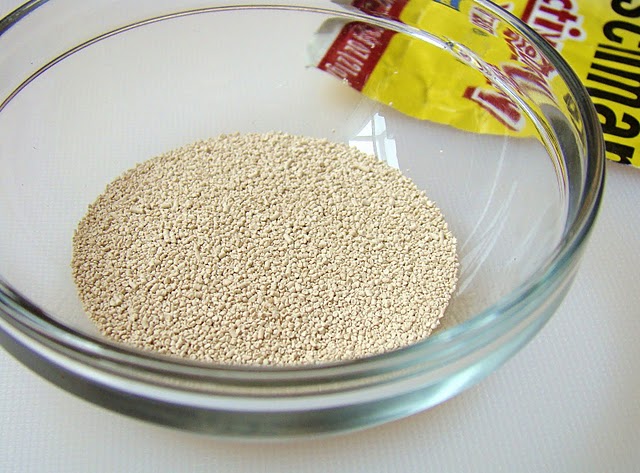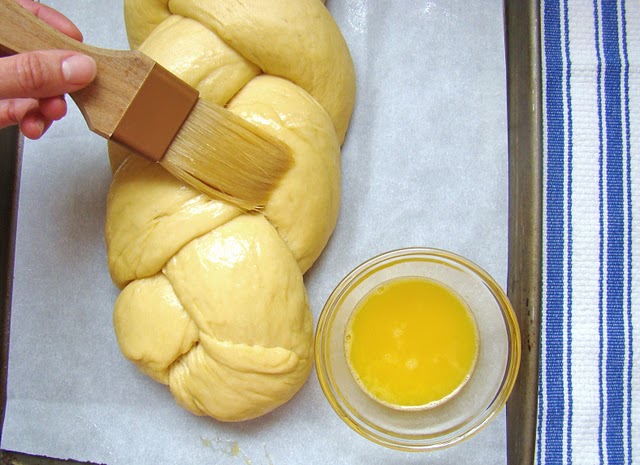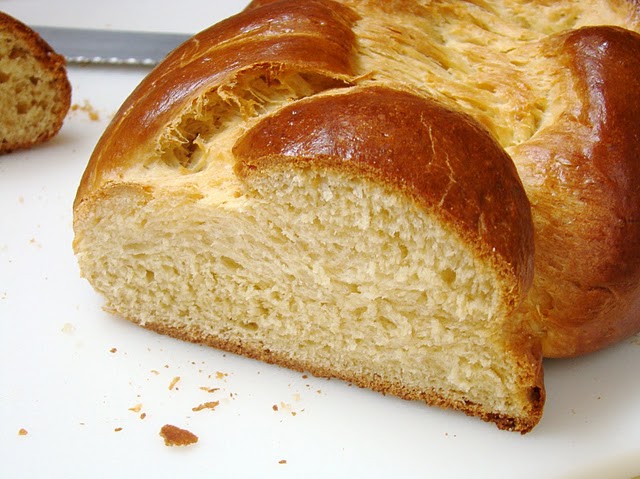Quick Brioche
All right, so I know I've told all y'all more than once about my totally irrational fear of yeast-raised doughs. I don't know what it is--I suppose perhaps I lack a Bread Thumb or somesuch. Or maybe my standards are too high (insert witty comment from husband here). But for whatever reason, I've had way more misses than hits when it comes to making bread. And with all of the amazing artisanal breadmakers here in the Bay Area, there's little reason to make some myself, other than that nagging voice in the back of my head telling me that I need to conquer my baker's Achilles' heel. Oddly, that voice sounds a lot like Justin Bieber. I still haven't figured that one out.
Anyway, when it comes to breads, I tend to be drawn to recipes that are of the Bread for Dummies sort. The kind that have millions of positive reviews or have things like "Foolproof", "No-Knead" or "Easy" in the title always catch my eye. And if the recipe is by a baker I love so much I have him at the table of my long, loud lunch daydream along with Lynne Rossetto Kasper, Ina, Shirley Corriher and Christopher Kimball, then all the better. Enter Nick Malgieri's Quick Brioche.
I am a sucker for brioche. My first real taste of it came from the legendary LaBrea Bakery in Los Angeles and it pretty much ruined me for life--I've never tasted one so light and delicate, and yet so buttery and rich. Toasted with blackberry jam, oh my Lord, you may never eat anything else again. I didn't hope to reach such great heights with this particular recipe, but nevertheless, I was pleasantly surprised with the results. The day it was made, you could find at least one person, full grown or tiny, with a hunk in his or her hand at all times--the whole loaf disappeared within a day.
For a dough that comes together in a flash in the food processor, the flavor and texture here is especially impressive. I'm talking big results for very, very little work, guys. It baked up all fluffy inside and deeply golden with a beautifully glossy crust. Afterwards, the only thing Justin Bieber was dogging me about in the back of my head was the fact that the nice little braid I had going when it went into the oven sort of stretched out and pulled apart unattractively down the center--other than just putting it in a loaf pan next time, any pointers as to how I can remedy this and get this whining, shaggy-haired teeny bopper off my back, friends?
Quick Brioche
Adapted from Nick Malgieri's The Modern Baker
Note that the butter used here is cold, not softened as in other brioche recipes. Keeping the butter cool here will help it withstand any heat from mixing in the food processor. You can make one large braid, or divide the dough in half and make two loaves with it in two buttered 9x5 inch loaf pans, which may take a few more minutes to bake.
Makes 1 16-inch long braid, or 2 standard-sized loaves
1 /2 cup milk
2 1/2 teaspoons active dry yeast
3 cups unbleached all-purpose flour
8 tablespoons cold unsalted butter, cut into 12 pieces
1/4 cup sugar
1 teaspoon salt
2 large eggs
2 large egg yolks
Egg wash:
1 additional large egg, beaten with a pinch of salt
Heat the milk in a small saucepan or in the microwave until it is just lukewarm, about 110 degrees F. Pour the milk into a small bowl and whisk in the yeast. Use a spoon to stir in 1 cup of the flour. Cover the bowl with plastic wrap and set aside until it is bubbly and slightly risen, about 20 minutes.
In the bowl of a food processor fitted with the metal blade (or the dough blade, if you have one), combine the butter, sugar, salt, eggs and egg yolks. Pulse until the butter is finely chopped and equally distributed throughout the mixture, which will appear curdled and separated (but won't worry--it will come back together when flour is added).
Scrape the yeast mixture into the food processor and pulse 6 times to mix. Add 1 cup of the remaining flour and pulse until the mixture is smooth. Scrape down the bowl. Add the rest of the flour and pulse again until well-mixed. Let the dough rest in the food processor for 10 minutes.
After the rest, start the processor and let it run continuously for 10 seconds. Turn the dough out onto a floured work surface. With the help of a bench scraper, knead the dough 5 or 6 times, or until it is slightly more elastic.
With the bench scraper or a knife, divide the dough into 3 equal pieces. Roll each each piece into a thick, even rope about 12 inches long. If the dough is too sticky to work with, refrigerate it for 20 minutes and start again.
Line a baking sheet with parchment paper. Place the three ropes lengthwise on the sheet, with about 1/2 inch in between them. Starting in the middle of the loaf, braid the ropes together towards you, pinching the ends together gently and tucking them under the loaf. Rotate the pan and repeat, braiding the rest of the loaf.
Cover the braid with a towel or buttered plastic wrap and let rise until doubled in bulk, 1 to 2 hours, depending on how warm the room is.
When you're ready to bake, position a rack to the center of the oven and preheat it to 350 degrees.
Just before baking, brush the braid lightly all over with the egg wash, being careful not to let it puddle in the creases of the braid. Bake until the bread is well risen and beautifully golden and glossy, about 35 to 40 minutes. Slide the parchment onto a wire rack to let the bread cool before slicing.





